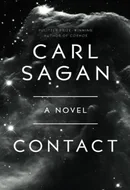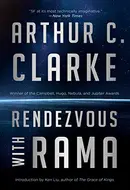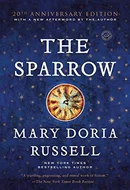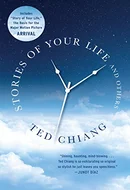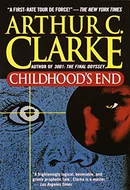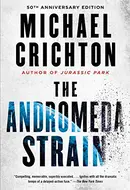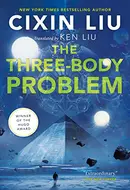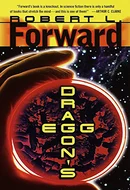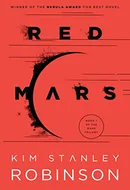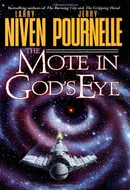Books Like...
"Contact" by Carl Sagan is a science fiction novel that explores humanity's first contact with an extraterrestrial civilization. The story follows astrophysicist Ellie Arroway who decodes a message from space providing instructions to build a Machine. Along with a group of scientists, she embarks on a journey into space to meet the intelligence behind the message. The book delves into how society, religion, politics, and individuals react to the possibility of contact with beings from another world. Sagan's writing style is described as detailed and in-depth, with a focus on scientific accuracy and philosophical contemplation.
The plot of "Contact" starts slowly but gradually builds up the tension as the characters navigate through the complexities of deciphering the alien message and preparing for the encounter. Sagan's unique approach to visualizing the aliens and his exploration of how the world might react to such an event make the book captivating and thought-provoking. Despite some pacing issues and a divisive ending, the novel offers a mix of hard science fiction, spiritual exploration, and social commentary, making it a compelling read for fans of the genre.
If you liked Contact, here are the top 100 books to read next:
- #1
In 'Rendezvous with Rama,' written by Arthur C. Clarke, a mysterious alien spacecraft named Rama enters the solar system, sparking a thrilling exploration mission by a select group of individuals. The novel delves into the awe-inspiring discovery and investigation of this enigmatic ship, focusing more on the impact of the situation and technology on the characters rather than heavy technological details. Clarke's writing style captivates readers with vivid descriptions, realistic science-based explanations, and a sense of mystery that keeps the narrative intriguing from start to finish.
Sooner or later, it was bound to happen. On 30 June 1908, Moscow escaped destruction by three hours and four thousand kilometres—a margin invisibly small by the standards of the universe. Again, on 12... - #2
The Sparrow by Mary Doria Russell is a speculative fiction novel that delves into themes of faith, friendship, and first contact with an alien civilization. The story follows a Jesuit-led mission to the planet Rakhat, exploring the complexities of human nature, morality, and the consequences of cultural misunderstandings when encountering an alien race. Through a non-linear narrative, the author weaves together past and present timelines, gradually revealing the heartbreaking fate of the characters and the challenges they face in a mission that tests their beliefs and resilience.
The Sparrow is a character-driven novel that combines elements of science fiction, theology, and anthropology to create a thought-provoking and emotionally resonant story. Mary Doria Russell's writing style is rich and deep, immersing readers in a world that is both unique and familiar, while exploring profound questions about faith, love, and the human condition. The book offers a moving exploration of the inner struggles and journeys of its characters, presenting a narrative that is both captivating and poignant.
THE FATHER GENERAL’S private secretary contacted Father John Candotti on the Feast of the Holy Innocents, three weeks after Emilio’s arrival at Number 5. "Sandoz is well enough to see you now," Johann... - #3
'Stories of Your Life and Others' by Ted Chiang is a collection of thought-provoking and inventive science fiction short stories. The stories explore unique concepts and alternate realities, delving into deep philosophical and scientific ideas while also incorporating elements of spirituality and human emotions. The writing style is described as precise, analytical, and dispassionate, yet it manages to create engaging and relatable characters who navigate through the complex worlds crafted by the author. Chiang's stories are known for their originality, creativity, and the way they challenge readers to think beyond the conventional boundaries of the genre.
Were the tower to be laid down across the plain of Shinar, it would be two days’ journey to walk from one end to the other. While the tower stands, it takes a full month and a half to climb from its b... - #4
'Childhood's End' by Arthur C. Clarke is a science fiction novel that explores the end of humanity through its transformation into something greater. The story follows humanity from its first contact with aliens, who demand an end to violence among humans, to a transformation led by alien overlords. The book delves into themes of psychology, sociology, and paranormal activities, all while contemplating the nature of humanity and its evolution. Clarke's writing style is described as captivating, with a dry and thought-provoking approach that leaves readers contemplating deep existential questions.
The volcano that had reared Tratua up from the Pacific depths had been sleeping now for half a million years. Yet in a little while, thought Reinhold, the island would be bathed with fires fiercer tha... - #5
'The Andromeda Strain' by Michael Crichton is a sci-fi thriller that follows the story of a US satellite that crashes back to Earth in a small town, leading to the immediate death of everyone exposed to it. The satellite is taken to an underground facility for analysis, where a team of scientists and doctors faces numerous challenges as they try to understand and contain the extraterrestrial organism responsible for the deadly outbreak. The book is known for its detailed scientific explanations, futuristic setting, and suspenseful narrative that keeps readers on the edge of their seats.
The writing style of 'The Andromeda Strain' is often described as informative, technical, and filled with scientific jargon. Michael Crichton's ability to blend hard science with fiction is a standout feature of the book, providing readers with an immersive experience that delves into the complexities of biology, medicine, and the potential threats posed by extraterrestrial organisms. Despite some opinions noting the dated aspects of the book, the retro technology, and the abundance of technical details, the novel is praised for its gripping plot, realistic premise, and the way it explores the intersection of science and suspense.
Lieutenant Roger Shawn must have found the binoculars difficult. The metal would be cold, and he would be clumsy in his fir parka and heavy gloves. His breath, hissing out into the moonlit air, would ... - #6
The Three-Body Problem by Liu Cixin is a hard science fiction novel that delves into the discovery of another race in our galaxy, challenging the basic principles of modern physics. Set in China during the Cultural Revolution, the book follows Chinese astrophysicist Ye as she tries to prevent a global catastrophe with possible extraterrestrial origins. The writing style incorporates elements of Chinese culture and history, offering a fresh perspective on sci-fi and blending imaginative scientific concepts with societal reflections.
The Red Union commander was anxious, though not because of the defenders he faced. The more than two hundred Red Guards of the April Twenty-eighth Brigade were mere greenhorns compared with the vetera... - #7
"Dragon's Egg" by Robert L. Forward is a classic hard science fiction novel that explores the emergence of an intelligent alien civilization living on the surface of a neutron star. The story follows a space expedition from Earth that makes contact with the Cheela, a species evolving at a rapid pace due to the extreme conditions on the neutron star. The narrative delves into the complexities of interacting with a civilization living on a different time scale and showcases the author's detailed scientific worldbuilding. Despite some criticisms about the character development, the book is praised for its unique concept, engaging plot, and the fascinating exploration of alien life forms.
Buu lay in his leafy arbor nest and looked up at the stars in the dark sky. The hairy young humanoid should have been asleep, but his curiosity kept him awake. A half-million years in the future that ... - #8
Red Mars is a hard science fiction novel that delves into the colonization and terraforming of Mars by a group of 100 scientists. The story follows the struggles and conflicts that arise among the colonists as they attempt to make Mars habitable while also dealing with political tensions and the impact of Earth corporations. The writing style of the book combines detailed scientific explanations with character-driven narratives, focusing on the personal journeys and motivations of the individuals involved in the Mars colonization project.
All lies, Frank Chalmers thought irritably. He was sitting in a row of dignitaries, watching his old friend John Boone give the usual Boone Inspirational Address. It made Chalmers weary. The truth was... - #9
'2001: A Space Odyssey' by Arthur C. Clarke is a science fiction novel that delves into humanity's first exploration of the solar system and the extraordinary discoveries made during this journey. The book follows a series of interconnected stories, starting from prehistorical times with ape men encountering a mysterious monolith to a mission to Saturn with advanced technology and artificial intelligence. Clarke's writing style is described as clear and beautiful, effectively capturing the awe and beauty of space travel.
The novelization of the screenplay by Stanley Kubrick and Arthur C. Clarke explores themes of human evolution, encounters with alien intelligence, and the implications of advanced technology on society. The narrative progresses through different time periods, offering philosophical reflections on human intelligence and the potential evolution of humanity, culminating in a thought-provoking and ambiguous ending that leaves room for interpretation.
- #10
'The Mote in God's Eye' by Jerry Pournelle and Larry Niven is a classic science fiction novel centered around mankind's first contact with an intelligent alien race known as the Moties. The story unfolds as a probe containing an alien corpse is discovered heading towards an inhabited system, prompting the Empire of Man to send a ship to make contact. The encounter with the Moties initially seems friendly, but suspicions arise after a disaster, leading to intriguing plot twists and revelations. The writing style is a blend of space opera and first contact themes, with a focus on exploration, exposition, and a richly detailed narrative that keeps readers engaged.
Commander Roderick Blaine looked frantically around the bridge, where his officers were directing repairs with low and urgent voices, surgeons assisting at a difficult operation. The gray steel compar...
